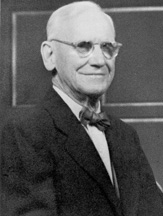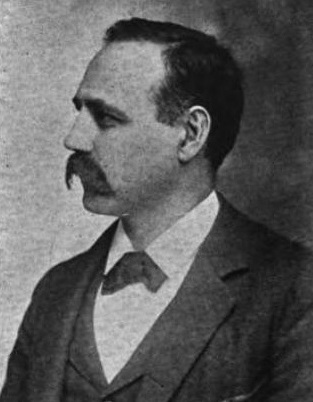
William Henry McMaster was an American politician who served as the tenth Governor of South Dakota from 1921 until 1925. A member of the Republican Party, he went on to serve as a member of the United States Senate from South Dakota from 1925 to 1931.
The Massachusetts Republican Party (MassGOP) is the Massachusetts branch of the U.S. Republican Party.

John Joseph Seerley was a one-term Democratic U.S. Representative from Iowa's 1st congressional district in southeastern Iowa.

The 1860 United States presidential election in Kentucky took place on November 6, 1860, as part of the 1860 United States presidential election. Kentucky voters chose 12 representatives, or electors, to the Electoral College, who voted for president and vice president.

The 1876 Massachusetts gubernatorial election was held on November 7. Incumbent Republican governor Alexander H. Rice was re-elected to a second term in office over former Minister to Great Britain Charles F. Adams.

The 1877 Massachusetts gubernatorial election was held on November 6. Incumbent Republican governor Alexander H. Rice was re-elected to a third term in office over former governor William Gaston.

The 1934 Massachusetts gubernatorial election was held on November 6, 1934.

The 1876 Colorado gubernatorial election took place on October 3, 1876, to elect the 1st Governor of Colorado after the state was admitted to the union on August 1, 1876. Republican John Long Routt, last governor of the Colorado Territory, was elected in a close race against Democratic nominee Bela M. Hughes.

The 1914 New Hampshire gubernatorial election was held on November 3, 1914. Republican nominee Rolland H. Spaulding defeated Democratic nominee Albert W. Noone with 55.18% of the vote.

The 1877 Ohio gubernatorial election was held on October 9, 1877. Democratic nominee Richard M. Bishop defeated Republican nominee William H. West with 48.94% of the vote.

The April 1876 Connecticut gubernatorial election was held on April 3, 1876. Incumbent governor and Democratic nominee Charles R. Ingersoll defeated Republican nominee H. Robinson with 51.85% of the vote.

The 1892 Tennessee gubernatorial election was held on November 8, 1892. Democratic nominee Peter Turney defeated Republican nominee George W. Winstead, and Incumbent Governor John P. Buchanan, who ran as a Populist, with 47.86% of the vote.

The 1879 Iowa gubernatorial election was held on October 14, 1879. Incumbent Republican John H. Gear defeated Democratic nominee Henry Hoffman Trimble with 53.94% of the vote.

The 1860 Massachusetts gubernatorial election was held on November 6. Incumbent Republican governor Nathaniel Banks did not run for re-election to a fourth term. He was succeeded by Republican John Albion Andrew, a radical abolitionist.

Elections were held in Illinois on Tuesday, November 3, 1936.

The 1920 Illinois gubernatorial election was held on November 2, 1920.

A general election was held in the U.S. state of Wyoming on Tuesday, November 2, 1926. All of the state's executive officers—the Governor, Secretary of State, Auditor, Treasurer, and Superintendent of Public Instruction—were up for election. Republicans narrowly picked up the governorship and solidified their control on the other statewide offices, increasing their margin of victory in each race.

A general election was held in the U.S. state of Wyoming on Tuesday, November 7, 1922. All of the state's executive officers—the Governor, Secretary of State, Auditor, Treasurer, and Superintendent of Public Instruction—were up for election. Democrats improved considerably from their performances in 1918, with William B. Ross winning the gubernatorial election and almost all of their statewide candidates outpacing their 1918 nominees. However, Republicans held all of the other statewide offices.

A general election was held in the U.S. state of Wyoming on Tuesday, November 3, 1914. All of the state's executive officers—the Governor, Secretary of State, Auditor, Treasurer, and Superintendent of Public Instruction—were up for election. Governor Joseph M. Carey declined to seek re-election to a second term, and Democratic State Senator John B. Kendrick was elected as his successor. Republicans, however, won all of the other statewide executive offices, including picking up the Superintendent's office.

The 1877 Wisconsin gubernatorial election was held on November 6, 1877. Under internal party pressure, incumbent Republican Governor Harrison Ludington, who had barely won the 1875 election, was pressured to not seek a second term. Former State Assembly Speaker William E. Smith, a longtime figure in Wisconsin politics, was selected as the Republican nominee, and Milwaukee County Municipal Judge Thomas A. Mallory won a protracted battle for the nomination at the Democratic convention. Smith and Mallory were joined in the general election by Greenback nominee Edward Phelps Allis. Ultimately, though the Republican vote share shrunk relative to 1875, the Democratic vote share shrunk more, and Smith won a larger victory than Ludington did, though only with a 44% plurality.





















